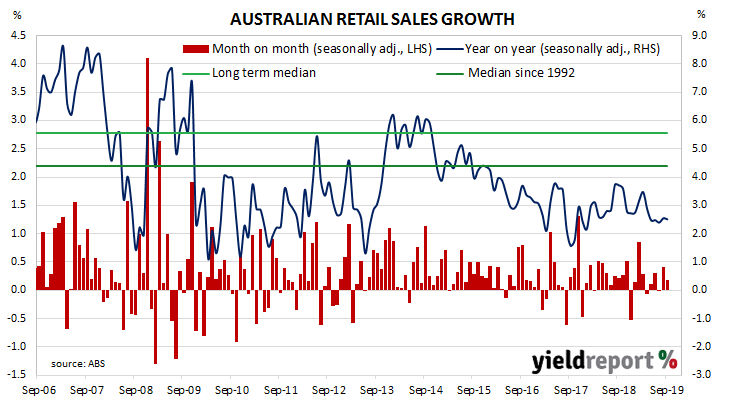Growth figures of domestic retail sales have been declining since 2014 and they reached a low-point in September 2017 when they registered a growth rate of just 1.5%. They then began increasing for about a year, only to stabilise at around 3.0% to 3.5% through late 2018. 2019 has produced a number of low-growth months along with the odd surprisingly strong result, lowering the annual growth rate further.
According to the latest ABS figures, total retail sales increased by +0.2% in September on a seasonally-adjusted basis, half the expected increase of +0.4% and less than August’s 0.4% increase. On an annual basis, retail sales increased by 2.5%, the same as August’s comparable figure after it was revised down from 2.6%.
ANZ economist Adelaide Timbrell said, “Tax cuts and rate cuts were no match for household challenges such as high household debt, rising cost of living…and pessimism about the economy.” Westpac senior economist Matthew Hassan was equally gloomy, saying the report “disappointed in every respect…”
US Treasury yields had increased on Friday night, lending support for higher yields in the domestic market on Monday when the Inflation Gauge figures came out. However, September’s retail sales report was also released on the same day and so the individual effect of each report is difficult to ascertain. By the end of the day, 3-year, 10-year and 20-year ACGB yields had all increased by 3bps to 0.86%, 1.21% and 1.61% respectively.

